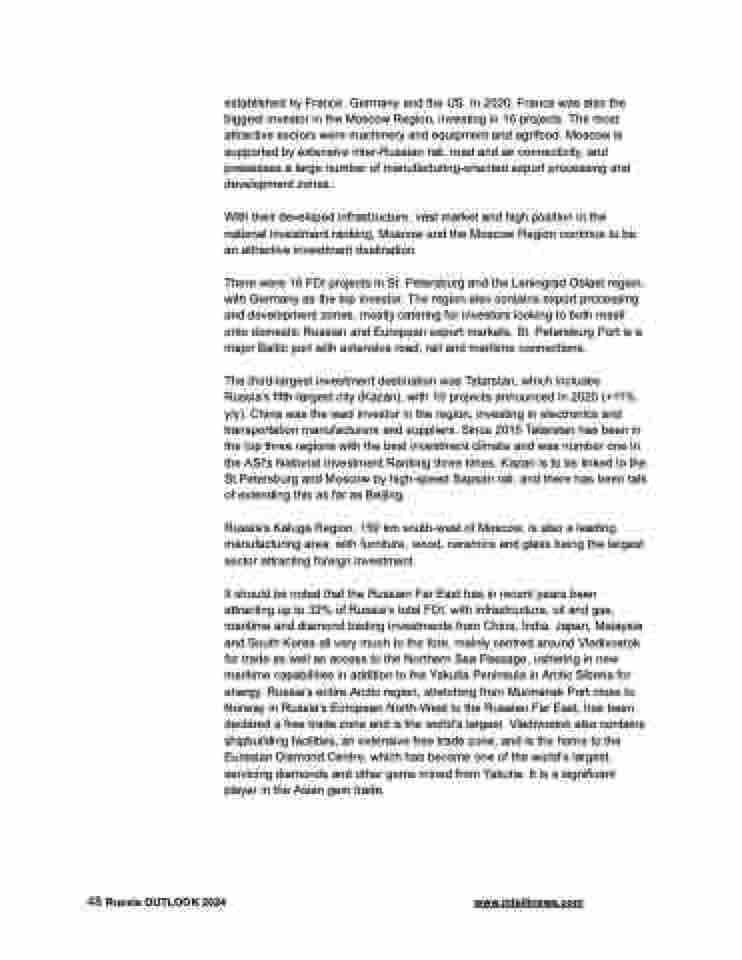Page 48 - Russia OUTLOOK 2024
P. 48
established by France, Germany and the US. In 2020, France was also the biggest investor in the Moscow Region, investing in 16 projects. The most attractive sectors were machinery and equipment and agrifood. Moscow is supported by extensive inter-Russian rail, road and air connectivity, and possesses a large number of manufacturing-oriented export processing and development zones.
With their developed infrastructure, vast market and high position in the national investment ranking, Moscow and the Moscow Region continue to be an attractive investment destination.
There were 16 FDI projects in St. Petersburg and the Leningrad Oblast region, with Germany as the top investor. The region also contains export processing and development zones, mostly catering for investors looking to both resell onto domestic Russian and European export markets. St. Petersburg Port is a major Baltic port with extensive road, rail and maritime connections.
The third-largest investment destination was Tatarstan, which includes Russia’s fifth-largest city (Kazan), with 10 projects announced in 2020 (+11% y/y). China was the lead investor in the region, investing in electronics and transportation manufacturers and suppliers. Since 2015 Tatarstan has been in the top three regions with the best investment climate and was number one in the ASI’s National Investment Ranking three times. Kazan is to be linked to the St.Petersburg and Moscow by high-speed Sapsan rail, and there has been talk of extending this as far as Beijing.
Russia’s Kaluga Region, 150 km south-west of Moscow, is also a leading manufacturing area, with furniture, wood, ceramics and glass being the largest sector attracting foreign investment.
It should be noted that the Russian Far East has in recent years been attracting up to 32% of Russia’s total FDI, with infrastructure, oil and gas, maritime and diamond trading investments from China, India, Japan, Malaysia and South Korea all very much to the fore, mainly centred around Vladivostok for trade as well as access to the Northern Sea Passage, ushering in new maritime capabilities in addition to the Yakutia Peninsula in Arctic Siberia for energy. Russia’s entire Arctic region, stretching from Murmansk Port close to Norway in Russia’s European North-West to the Russian Far East, has been declared a free trade zone and is the world’s largest. Vladivostok also contains shipbuilding facilities, an extensive free trade zone, and is the home to the Eurasian Diamond Centre, which has become one of the world’s largest, servicing diamonds and other gems mined from Yakutia. It is a significant player in the Asian gem trade.
48 Russia OUTLOOK 2024 www.intellinews.com


